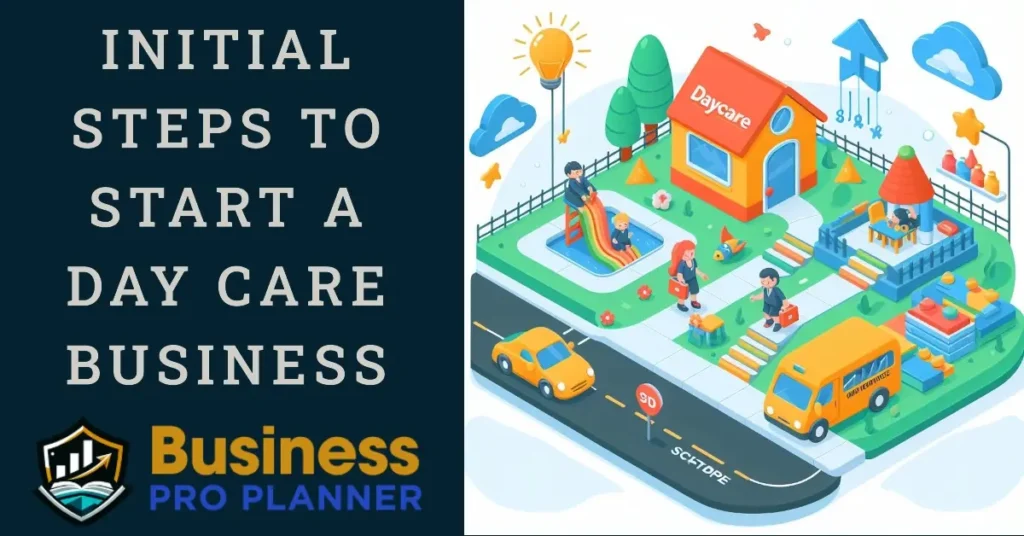Operating a daycare allows entrepreneurs to run a business while providing an essential service for working parents. With more families needing childcare, the daycare industry has expanded. However, starting a daycare involves meeting strict licensing rules, creating fun learning environments, and building relationships with parents. Learn How to Start a Daycare Business and embark on this rewarding journey.
This guide will provide expert tips to successfully start your daycare business. We will cover key steps like writing a business plan, obtaining licenses, securing a facility, hiring staff, handling finances, and implementing a curriculum. Whether you dream of a home daycare or a large center, these tips will set you up for success.
Understanding the Daycare Business
What is a Daycare Business?
A daycare business provides care, supervision, and early childhood education for infants, toddlers, preschoolers, and sometimes older children before and after school hours. Daycares support the developmental needs of children, enabling parents to work or attend to other responsibilities. Daycare centers are licensed facilities that may care for larger groups of children. Home daycares operate out of a provider’s residence and typically have smaller groups.

Daycare activities include playtime, learning, meals, naps, and more. Quality daycares have an educational curriculum led by trained teachers. It requires planning age-appropriate activities, meeting safety and nutrition standards, conducting screenings, and communicating with parents. Successful daycare businesses have excellent customer service, positive relationships with families, and a strong grasp of child development.
History of Daycare Business
Organized childcare has existed for centuries, but the modern daycare industry emerged in the early 20th century as more women joined the workforce. During World War II, the Lanham Act was enacted to establish public nursery schools, facilitating the inclusion of women in roles left vacant by men serving in the armed forces. The post-war shift from family-based agriculture to urban industrial work increased demand for non-relative-based childcare.
In the 1970s and 1980s, commercial daycare centers grew substantially, evolving from substitute care to a focus on early childhood education. State and federal policies regulate health, safety, and program standards. The industry continues evolving to meet the needs of contemporary families.
Pros and Cons of Daycare Business
Pros:
- Meet an essential community need while pursuing your passion for working with children
- Indulge in the gratifying experience of cultivating early development.
- Establish meaningful connections with both children and parents.
- Opportunities to be creative through activities, crafts, and curriculum
- Flexible schedule if operating a home daycare
- Ability to generate steady income
- Professional independence and control over your business
Cons:
- Long hours spent caring for energetic young children
- Regular business expenses and startup costs
- The stress of meeting strict regulations and quality standards
- Potential for low profits despite large time investment
- Difficulty finding reliable substitute caregivers
- Risk of children spreading illness that temporarily closes daycare
- Dealing with challenging child behaviors or demanding parents
- Requires careful record-keeping and organization
Initial Steps Need to Start a Daycare Business

Develop a Strong Business Plan
The first step to starting a daycare is crafting a detailed business plan. This involves:
- Researching the market, potential locations, and current competitors
- Defining your daycare’s mission, vision, and target audience
- Projecting expenses and creating an operating budget
- Choosing what ages you will care for and your capacity
- Detailing your curriculum, activities, staffing plan, and policies
A thorough daycare business plan is an essential roadmap and helps you secure funding if needed.
Understand Daycare Licensing and Regulations
Every state has unique licensing requirements to operate a childcare business legally. You will need to:
- Contact your local health and human services department
- Learn the minimum standards for areas about child care licenses like:
- Safety procedures
- Staff qualifications and ratios
- Facility size, design, and outdoor space
- Hygiene and nutrition
- Record-keeping and policies
- Submit license applications, fees, and other paperwork
- Pass inspections and background checks
Staying compliant with ongoing state and local regulations is crucial for operating legally.
Set Up Your Daycare Facility
Your daycare facility must be clean, safe, and designed to nurture children. Key steps include:
- Ensuring adequate indoor and outdoor space
- Organizing engaging activity zones and learning areas
- Purchasing age-appropriate toys, books, furniture
- Meeting safety and health standards (fire, sanitation, etc.)
- Decorating with bright, fun colors and displays
Also stock first aid kits, art supplies, nap mats, and other daycare must-haves.
Market Your Daycare’s Services
Once licensed, you need to attract local families to build enrollment. Incorporating impactful marketing tactics involves:
- Crafting brochures, fliers, social media, and an informative website enhances marketing impact.
- Having an open house so parents can tour the facility
- Networking with community groups, parents, and nearby businesses
- Advertising in local newspapers, parenting magazines, and online
- Offering promotions like discounted registration fees
Spread the word about your educational approaches to stand out.
Stock Up on Equipment and Safety Essentials
A daycare needs lots of supplies to enrich children’s development and keep them safe. Essential equipment and materials include:
- Age-appropriate toys like blocks, puzzles, books, music players
- Art supplies such as crayons, markers, paper, craft materials
- Furniture like tables, chairs, cubbies sized for children
- Nap mats, cots, or cribs
- Kitchen appliances to store and serve meals and snacks
- First aid kits and safety tools like cabinet locks and outlet covers
- Developmentally appropriate learning games and activities
- Integrate outdoor play essentials: climbers, balls, and tricycles
- Ensure child safety with gates, corner guards, and monitoring systems
Ensure all materials meet safety standards. Maintain adequate ratios of equipment and supplies as enrollment expands. A well-stocked daycare allows children to engage in educational play, arts, and active learning. Arrange materials in engaging, easy-to-access displays.
Recruit and Hire Qualified Staff
Caring for multiple children requires reliable staff. Important hiring steps:
- Determine the teacher-to-child ratios and roles needed (teachers, assistants, substitutes, cooks, nurses, etc.)
- Publish job listings and rigorously screen applicants.
- Conduct interviews with promising candidates and perform thorough background checks
- Review certifications, credentials, experience, and conduct reference checks
- Hire the best fits for your center and onboard new hires
Don’t forget to design an employee handbook covering your policies, code of conduct, and benefits.
Get Organized Financially
You need to get your daycare business finances in order. This includes:
- Choosing a business structure (LLC, S-Corp, etc.)
- Applying for your Federal EIN and state tax IDs
- Opening a business bank account and getting a credit card
- Securing small business insurance to protect against liability risks
- Setting tuition, copays, late fees, and payment collection process
- Applying for small business loans or grants if needed
Track income and expenses closely each month. Keep personal and daycare finances separate.
Create Engaging Programs and Activities
Keeping children engaged through fun activities is key for daycares. Consider this mix of ideas:
- Circle time with songs, stories, movement, calendar review
- Arts and crafts like coloring, painting, play dough sculptures
- Dramatic play areas such as housekeeping or dress-up
- Building toys like blocks, legos, magnet tiles
- Sorting and counting games with puzzles or manipulatives
- Music and movement using rhythm instruments, dancing
- Reading corner with comfortable seating and books
- Nature activities like planting seeds or bug hunting
- Field trips to parks, libraries, museums, or farms
- Physical activities like obstacle courses or parachute play
- Science experiments using materials like bubbles or magnets
- Cooking projects to develop math and literacy skills
Also incorporate learning concepts like letters, numbers, shapes, colors, and social-emotional growth. Develop schedules balancing teacher-led instruction with child-directed exploration. Plan individual, small group, and large group activities to engage all learning styles. Displaying children’s creations promotes self-esteem.
Build Relationships with Parents and Children
Once open, focus on developing a positive rapport with families. Tips for success:
- Greet children warmly each morning and ensure separation anxiety
- Keep parents informed of schedules, activities, and behavior
- Organize meet-the-teacher nights before school starts
- Send weekly newsletter updates and photos to parents
- Host family-centered events like holiday parties
Meeting each child’s needs takes patience and compassion. Stay organized and rely on your supportive staff as your enrollment grows.

Conclusion
Starting a rewarding daycare business requires passion, grit, organization, and smart preparation. This guide covered key steps including writing a business plan, meeting licensing rules, setting up your facility, hiring staff, handling finances, purchasing equipment, and planning enriching activities. While launching a daycare takes hard work, the ability to care for children’s growth in a creative learning environment makes it a fulfilling venture.
With dedication and the right support, your dream of opening a thriving daycare can become a reality. We hope these tips give you the confidence to start your exciting journey of enriching young lives as a daycare business owner. Reach out for any additional questions as you establish your own successful childcare business.

